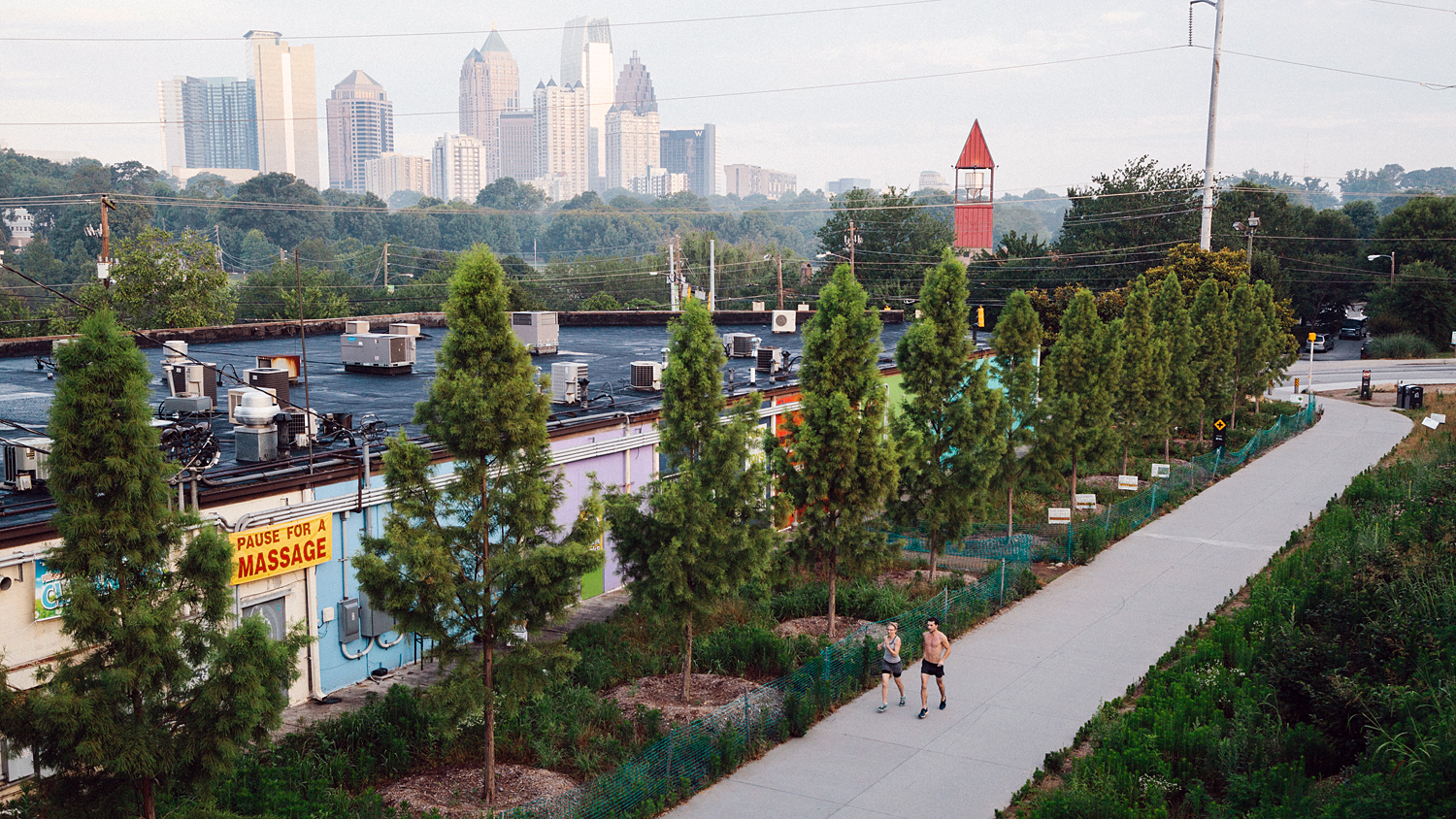Designing Greenways for Diverse Users

With greenways taking root in urban areas across the country, understanding who visits – and why – can help improve trail planning and design. A new study of greenways in Atlanta and San Antonio, Texas, offers insights for urban planners, park designers, neighborhood groups and local residents.
These linear parks have potential for conserving natural resources and improving public health. A greenway can help city dwellers enjoy the outdoors, create space for exercise and recreation, and connect neighborhoods through both physical trails and social relationships.
“Greenways are often created to ‘transform’ urban neighborhoods, which can have both positive and negative consequences,” says Lincoln Larson, an assistant professor of parks, recreation and tourism management at North Carolina State University and co-author of an article about the research.
“We’re interested in who’s using and benefiting from greenways. Are the demographics of the neighborhood different from those of greenway users? Do they attract people from the local area or visitors from a distance?”
Larson and his co-authors surveyed users of Atlanta’s Eastside Trail and San Antonio’s Leon Creek Greenway to find out why visitors came to the greenways and how they spent their time.
In both locations, about half of those surveyed said they visited more than once a week. The top reasons for coming to the greenways were exercising and escaping city life.
Each trail’s unique features influenced its use. The Eastside Trail, a green space on a converted rail line near dense housing in urban Atlanta, attracted plentiful foot and bicycle traffic. Most visitors lived within 1.25 miles of the trail.
Users often said that the trail allowed them to socialize with others and that it helped connect the community.
In contrast, visitors at the Leon Creek Greenway in suburban San Antonio traveled farther to reach the trail, with many driving there. The primary reason for visiting was to exercise, with bicycling the most common trail activity. Users said they appreciated connecting with nature along the wide trail, which runs along a river corridor with vegetation.
Both of the trails attracted a diverse group of visitors. Nearly 60 percent of the San Antonio greenway visitors were non-white, with about 42 percent Hispanic, nearly matching the area’s racial and ethnic makeup.
About 32 percent of greenway users in Atlanta were non-white, including 19 percent who were African American and 5 percent who were Hispanic. Those numbers don’t quite match the demographics of the surrounding neighborhoods, where 37 percent of the population is African American.
“Previous research has shown that greenway users are predominantly white, regardless of where those trails are located,” Larson says. “This study shows that greenways can appeal to other groups as well – if certain conditions are met.”
The top concern was trail safety and security, particularly among women and racial and minority visitors to the trail.
Older adults, who visited primarily to exercise, were most concerned about trail condition and maintenance. Few young people visited the trails in either location, with only 16 percent of groups on the trail having children with them. More than 90 percent of users were adults.
“It can be difficult to balance the needs of all users, which is why it’s important to involve people from the nearby neighborhoods early in planning and throughout the design process,” Larson says. “Greenways are the fastest-growing form of urban green spaces, so we want to make sure they’re well-designed to equitably serve all residents.”
The research appears in Landscape and Urban Planning. Lead author Sam Keith is with the University of Georgia. In addition to Larson, co-authors include Scott Shafer from Texas A&M University as well as Jeff Hallo and Mariela Fernandez of Clemson University.


